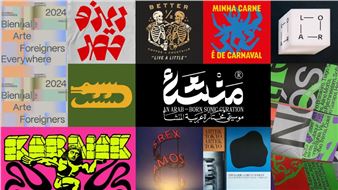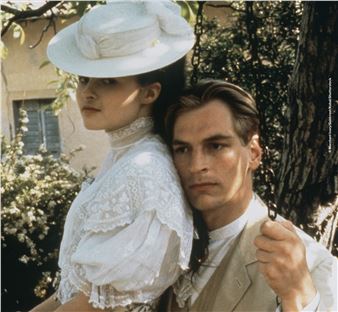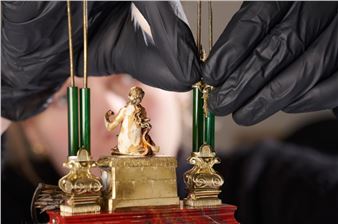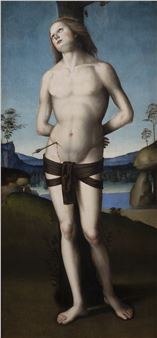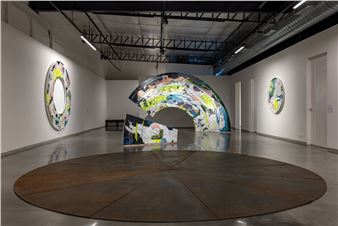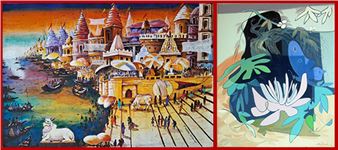Pema Tshering: In Between Dreams
However, these teachings are meant to guide a practitioner not only during the passage from one life to rebirth, but during the experience of life itself, as well as in dreams, for according to Buddhists, the reality and life with all the happiness and suffering are but an illusion.
Pema Tshering’s (TINTIN’s) paintings attract the viewer by his skillful and careful application of pigments, deliberate choice of colors, intriguing forms, and revealing titles. It is possible to read into the paintings even before fully knowing the artist’s intent or conceptual framework expressed in the images that comprise a particular work.
Each viewer’s perceptions, expectations, and visual associations inform and always affect how one perceives and relates to art.
This may be especially true for Pema Tshering’s work, because he is using traditional painting techniques, symbolic elements of iconography, composition and color, as well as the recognizable form of Tibetan Buddhist hanging scrolls called thangka. At the same time, he is expanding the iconographic forms and rules, subverting hierarchies of traditional compositions, and constructing new personal connotations he shares with the audience. He is inviting the viewers to look into the seemingly familiar and to get through to a new meaningful encounter.
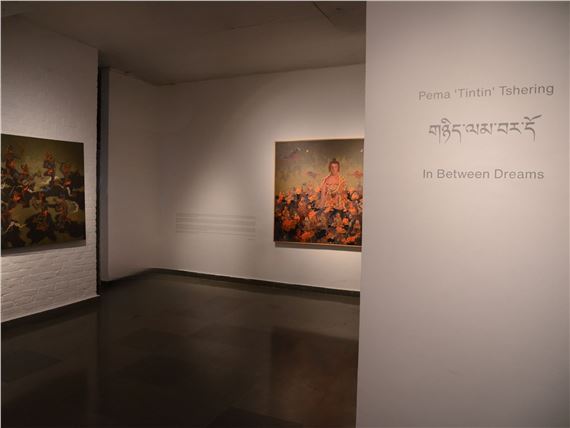
Recommended for you
However, these teachings are meant to guide a practitioner not only during the passage from one life to rebirth, but during the experience of life itself, as well as in dreams, for according to Buddhists, the reality and life with all the happiness and suffering are but an illusion.
Pema Tshering’s (TINTIN’s) paintings attract the viewer by his skillful and careful application of pigments, deliberate choice of colors, intriguing forms, and revealing titles. It is possible to read into the paintings even before fully knowing the artist’s intent or conceptual framework expressed in the images that comprise a particular work.
Each viewer’s perceptions, expectations, and visual associations inform and always affect how one perceives and relates to art.
This may be especially true for Pema Tshering’s work, because he is using traditional painting techniques, symbolic elements of iconography, composition and color, as well as the recognizable form of Tibetan Buddhist hanging scrolls called thangka. At the same time, he is expanding the iconographic forms and rules, subverting hierarchies of traditional compositions, and constructing new personal connotations he shares with the audience. He is inviting the viewers to look into the seemingly familiar and to get through to a new meaningful encounter.

 ARTISTS
ARTISTS








